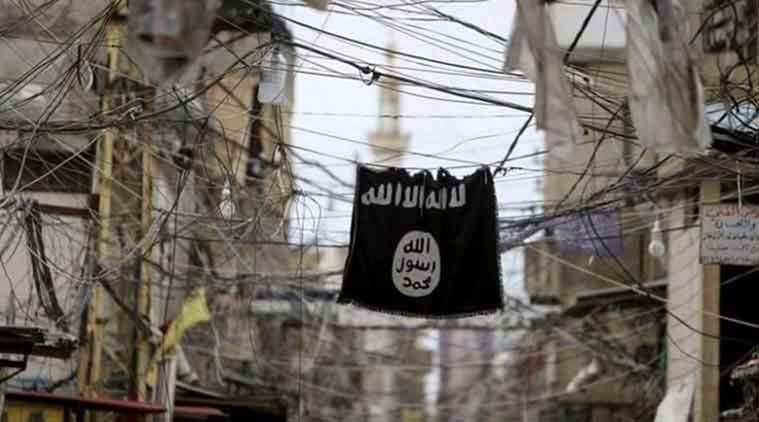
Written by: Rukmini Callimachi
Along two sharp curves of the Euphrates River in northeastern Syria, the Islamic State is fighting to hold on to the last speck of the vast territory it once controlled.
At its height, the group enforced its brutal version of Islamic rule over more than 60,000 square miles in Syria and Iraq. It is now squeezed into two villages occupying 6 square miles. There, its foot soldiers have been engaged in heavy clashes with the US-backed and Kurdish-led militia Syrian Democratic Forces who are battling to take back the turf, according to a spokesman for the militia and observers in the area.
While some of the extremists are fighting to the end, local officials say the militants have been surrendering by the dozens, repeating a pattern observed in other cities shortly before the group was overrun.
Even with the end of the group’s self-proclaimed caliphate in Syria and Iraq within view, Western officials caution that this is not the end of the violent threat posed by the group. It has continued carrying out devastating attacks as it reverts to its insurgent roots, including a suicide bombing that killed four Americans in Manbij, Syria, last week.
“I think this is the end of a phase, and the beginning of a subsequent fight,” said Col. Sean Ryan, a Baghdad-based spokesman for the US-backed coalition fighting the group. “Now they will resume smaller attacks. Everyone needs to remain vigilant.”
The Islamic State’s ambitions have always been global, and its affiliates in Afghanistan, West Africa, the Philippines, Yemen, Somalia and elsewhere have been growing, experts say. And just inside Syria and Iraq, the group still has between 20,000 and 30,000 fighters, according to separate estimates by the Pentagon inspector general, the United Nations and the Center for Strategic and International Studies.
While many fighters have been killed since those estimates were calculated late last year, analysts say that large numbers have simply melted into the population.
The two villages still held by the group — Marashidah and Baghuz Fawqani — represent the final 0.01 percent of the caliphate in Syria and Iraq. They sit inside the hook created by two bends in the Euphrates. The terrain is lush near the river and then increasingly desiccated farther out.
After months of grueling war that has claimed the lives of thousands of fighters in Syria, the Kurdish-led militia has recently made significant inroads. Some officials are optimistically declaring that the last two villages will fall in a matter of days. Others estimate the final battles, which come as the United States prepares to withdraw 2,000 troops in the coming months, could take as long as three weeks.
“Yesterday, 60 fighters — among them 50 foreigners — surrendered to our forces, and the number was 30 fighters the day before,” Shervan Derwish, spokesman of the military council in Manbij, said Wednesday. “The remaining Daesh fighters are split between those who want to surrender and those who want to fight until the end,” he said, using the Arabic acronym for the Islamic State.
It’s not surprising that a majority of those who surrendered are foreign fighters. The Islamic State, as it established its caliphate in 2014, recruited from 100 countries and tens of thousands of people flocked to its territory.
Unlike the local population, the foreigners often do not speak Arabic fluently, and their non-Arab features mean that they cannot blend in with the local population. Those handing themselves over, including the wives and children of foreign fighters, are bitterly complaining that their local counterparts were able to slip away, leaving them to fend for themselves.
The leaders of the Syrian Democratic Forces say a decision to alter their battle plan has allowed them to advance more quickly on the Islamic State holdouts.
During previous assaults, the militia usually attacked from a single front. Then came an aggressive counterattack by the Islamic State in October in the village of Sousa that inflicted heavy casualties on the coalition and allowed the militants to regain areas lost days before.
“After that, the leadership took a decision to change tactics, and moved us to attacking on two — or even three — axes so that the small force that ISIS has cannot counter,” said Zana Amedi, a spokesman for the Syrian Democratic Forces. “Right now, the operation is going on two axes — from the north, we are attacking the village of Marashidah, and from the south, the village of Baghuz.”
In recent days, the Islamic State has shown that it is still a potent force by leading back-to-back attacks on U.S. forces.
The first was the suicide explosion at a restaurant in Manbij, which killed 15 people, including two U.S. service members, a Defense Department civilian and a military contractor. The second was a strike on a U.S. convoy passing south of the town of Hasakah, which claimed no lives but was nevertheless worrying because of its targeted nature.
“If they are able to operate in Manbij, which is 300 kilometers away from where they hold territory, you tell me, are they defeated?” asked Amedi, the Syrian Democratic Forces spokesman. “ISIS has power, ISIS has sleeper cells and ISIS has been preparing for this for years,” he added.
“Saying ISIS is defeated means you know nothing about terrorism, nothing about incursions, nothing about insurgent activity.”